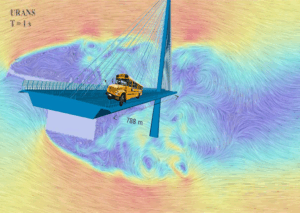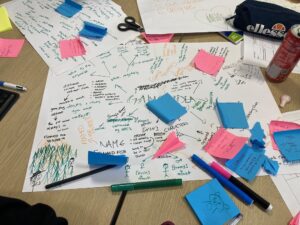Environmental planning, human-environmental interaction, public participation in decision making, data and GIS with Dr Ainhoa Gonzalez del Campo, School of Geography

Q: Tell us a bit about your disciplinary background, and how you came to Geography
A: Well, it’s a long story but we can cut it short! I’m not a geographer. I have a degree in agricultural engineering. But my work is all about human and environmental interactions and spatial analysis – more specifically, my knowledge and application of Geographic Information Systems brought me to Geography. I have a Master’s in Environmental Resource Management, my PhD is in Environmental Planning, so it’s all environmental related spatial analysis. That’s what I do and that’s how I ended up in Geography, but I’m an odd fit.
Q: Would you call yourself an environmental planner? What does that involve?
Yes, I think that’s what best describes me. My work focuses on planning for environmental protection and assessing human-environmental interactions. Environmental planning is all about accommodating growth, while protecting natural resources and ecosystems. My background, training and a lot of my research is around Strategic Environmental Assessment and Environmental Impact Assessment which basically imply anticipating, assessing and mitigating potential impacts on the environment. The assessments are required under European law and undertaken at various planning levels – for example, land-use planning would be subject to Strategic Environmental Assessment, while a residential development project would be subject to Environmental Impact Assessment. In both cases, the objective is to integrate environmental considerations into decisions, and to promote sustainable development. These processes ensure that we anticipate problems so we can address them in a timely manner. That’s where that label of environmental planner comes from. Not many people use it, it’s more often ‘environmental scientist’ or ‘environmental technician’, or ‘planner’ solo. I worked in consultancy for many years before coming back to academia. My boss at the time gave me that title and it stuck as it defines well what I do and what I research on.
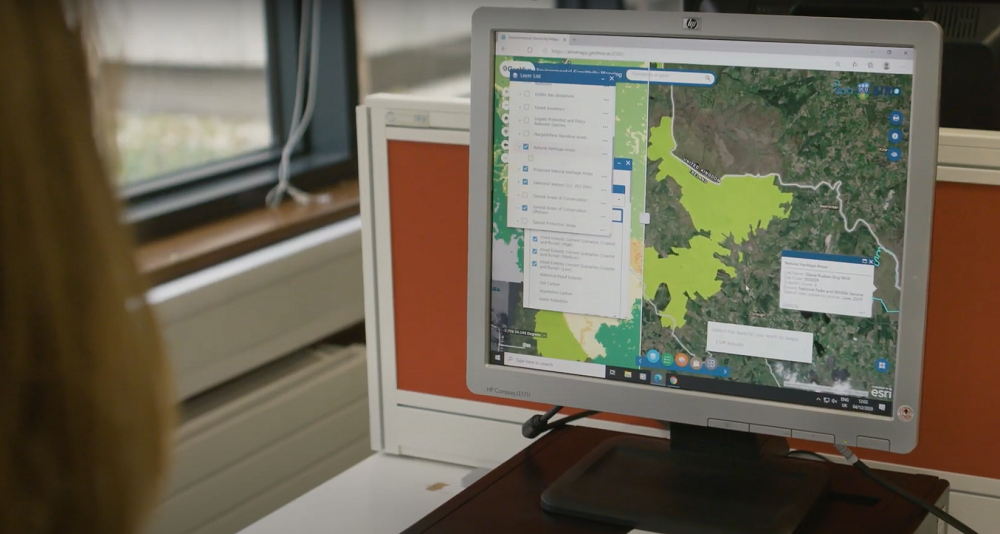
“Throughout impact assessment processes, you look at a range of physical environment issues, such as water, air quality, biodiversity or the landscape, as well as other aspects of the environment more broadly such as cultural heritage, material assets or human health.”
– Dr Ainhoa Gonzalez
Q: So the term is not used so much within planning itself?
A: I don’t know many environmental planners. Planners themselves are concerned generally about zonings and development policies, accommodating population and economic growth and ensuring service provision, for example, through plan-making. I come from the environmental angle and try to get planners to think about the environment. I bring environment to the forefront.
For example, planners may focus on industry, residential and wastewater provision, the aspects that make an urban environment function. However, as I have noted previously, there is a legal requirement to incorporate environmental considerations when deciding where these services should go, or how they should be developed. Planners do not always have an environmental awareness; they may be unaware of the importance of certain environmental assets or may not understand where vulnerable natural resources are located and why they are vulnerable. So it’s about working with them to raise awareness and to facilitate understanding of the location and vulnerability of environmental resources and assets, to help them direct the development to the right locations to avoid environmental damage, to avoid affecting those natural resources.
Q: How do concepts like ecosystem services and natural capital feed into the environmental planning decision making processes? Is it quite formalised?
A: The integration of environmental considerations is formalised because there is European legislation behind it. There are European directives that require any planning process to take into account environmental considerations and environmental impact.
It’s formalised in the sense that there are structures, steps, methodologies to do so. And the environment is at the heart of these processes, including natural resources and ecosystem services. I feel more comfortable talking about natural assets and natural resources than natural capital, for the simple reason that natural capital has an economic connotation. I relate better to ecosystem services, because I am not sure we can put an economic value on natural resources at all. That would be commodifying things and once we start to do that the game changes. I don’t agree with that slant.
Throughout impact assessment processes, you look at a range of physical environment issues, such as water, air quality, biodiversity or the landscape, as well as other aspects of the environment more broadly such as cultural heritage, material assets or human health. There is a wide range of considerations, required by law, and these are slowly but surely being also examined for their value, for the services they provide to society as a whole and to human well-being. Considering these natural and man-made resources from the onset, in any plan-making process, brings in not just awareness but elevate their consideration and promote their protection and enhancement.
When it comes to highlighting areas with environmental sensitivities or, indeed, areas that provide important ecosystem services, often the reaction of planners is to consider these as areas that cannot be developed, as ‘no go areas’. So the consideration of environment in planning can be seen as a bit of a burden, an impediment. For many years planners considered Strategic Environmental Assessment or indeed Environmental Impact Assessment as some sort of obstacle to plan-making. They saw it as a something that was impeding their work and development.
There is a need for awareness raising and for training to make them understand that those are not necessarily ‘no go areas’, that they represent assets to the local area, to the region, for everybody. They bring in ecosystem services, they are performing functions that you are not going to get if you develop over them. If you remove them, you’ll have to deal with many other problems, like flood risk, erosion, or biodiversity and pollination loss. They are starting to change their standpoint though, to become more aware and to work with the impact assessment processes. Particularly the younger generation in the planning system is starting to value these processes as a way to making better informed decisions.
Q: What’s the history behind environmental planning and its role in planning and development?
A: Environmental impact assessment legislation dates back to the 1970s; it was first introduced under the US National Environment Policy Act. In Ireland and in Europe it came in the 1980s. The first Environmental Impact Assessment directive was in 1985. The Strategic Environmental Assessment directives came in 2001 and implemented in 2004. So it’s relatively recent. Planners really resisted this and at the beginning it was purely a tick box exercise, to comply with legislation. In the last few years, the Environmental Protection Agency has done a lot of work on education and awareness raising. Generally speaking, it’s possibly only in the last decade that these processes are starting to be more effectively applied. Now planners are starting to embrace them, at first it was a struggle. For instance, some plan-makers initially saw Strategic Environmental Assessment as consultants telling them what to do, but it wasn’t that, it was about becoming environmentally aware.
“lack of public engagement also creates misconceptions on impacts and mistrust in developers. But windfarms can be appropriately planned to mitigate environmental issues.”
Dr Ainhoa Gonzalez
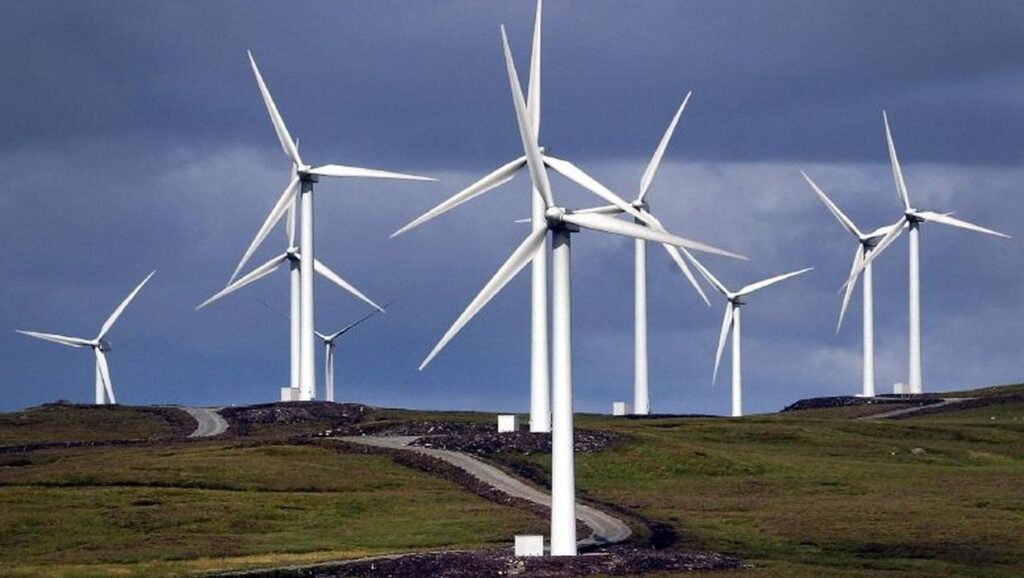
Q: Tell us about how tricky environmental planning issues are handled, say something like windfarms development, where there is often community resistance
A: Windfarms are a typical example but one that captures environmental planning issues well. The trickiest thing in environmental planning is that there are always competing land-use demands, from existing uses versus proposed uses and the need to expand urban areas and services. There’s always that conflict. Wind turbines capture such competing demands well. We’re trying to be more sustainable and wind turbines are a way out of fossil fuels, fostering sustainability through the use of renewable energy. In that sense they tick all the right boxes, but when it comes to deploying them, there is often resistance. It’s a complex issue because you’ll have pro and against standpoints on windfarms. I think those that are against wind energy development may not fully understand their importance for a sustainable future or, indeed, may not have been fully engaged in the planning processes and, as a result, there are no positive outcomes for the affected communities. This is compounded by the fact that settlements and dwellings in Ireland are scattered, so there will always be someone impacted by their deployment – and here is where competing land-uses come at play. Windfarms are often seen as industrialisation of the landscape, with visual impacts, among other things affecting the amenity of the immediate environment. The lack of public engagement also creates misconceptions on impacts and mistrust in developers. But windfarms can be appropriately planned to mitigate environmental issues. Yet, decisions that do not engage with the community will lead to public opposition. And more importantly, decisions that do not bring something back to the community but are perceived as ‘damaging’ will always be resisted – windfarms or otherwise.
I’ve seen rapid development of windfarms in the Basque country, where I’m from, and where people have really embraced them because the electricity goes straight to the local communities. For example, in Pamplona where I did my degree, no matter where you look, the hills around the city are dotted with wind turbines. People are happy with these developments because fifty percent of the electricity in the county comes from windfarms, they are benefiting directly from them.
I visited a large windfarm site a few years back outside Glasgow. In that particular project, they did lots of local consultation and created a lot of walking trails and cycle paths all through the windfarm, and a visitors’ centre for education. It was great to learn and see how they engaged with the community and brought something back to the community in addition to renewable energy. It was a win-win for the developers, the local community, and the environment.
In Ireland, despite its overall congested landscape and common local opposition, there are very positive moves towards renewable energy also. Bord na Mona, for example, are moving away from extracting peat and making use of cutaway bogs to develop windfarms. Bellacorrick, which was a peat-fuelled power station is now a big windfarm site. Such positive developments are taking us in the right direction, but competing land-uses must be considered and people engaged to avoid conflicts and local opposition.
Public consultation and engagement are central to environmental planning. In the example of the windfarms again, the government signed a memorandum of understanding with the UK, to deploy turbines and take the energy back to the UK. This decision was taken without consulting with the public and, of course, people rose up and challenged it. Government and researchers need to engage and liaise with the public to understand their views and needs, and to always bring something back to the communities. This is also central to sustainable development. It is a shame that some of the decisions and lack of public engagement have affected the effective expansion of the wind energy sector. Ireland should be exporting sustainable energy, we have so much wind.
Q: Your work often involves public engagement and participation – what would you say is the current state of play around this? Are new tools and methodologies improving public participation?
Well, it depends. There are very good case studies where you can say ‘there is good public engagement and participation here’ but, in general, public participation in Ireland and elsewhere is poorly done. Public participation is mandatory under the Aarhus convention. And it’s a requirement of the Strategic Environmental Assessment Directive. And because of these legal mandates alone, we should be doing it and doing it properly, as part of both planning and environmental assessment processes. Unfortunately, that’s often not the case.
There are a number of reasons why this is not the case. Firstly, planners and environmental consultants are not trained, as such, to do public participation. Generally, on a planning team or an environmental consultancy team you don’t have a public engagement expert. They do what they can, which is often is not sufficient. Then on the other side, you have the general public not participating for the simple reason that they might not be aware that participation is occurring. Or they might not bother because they feel that their comments will not be taken seriously into account.
There is also the fact that, in general, people do not respond to things unless it affects them – the NIMBY (Not In My Back Yard) effect. It’s only when people think, ‘I don’t want that development here’ that you hear from them. Broadly speaking if something is coming to your locality, you might develop an interest or a concern and then you are willing to participate, but if it’s somebody else’s problem, people rarely engage in consultation. I think that this is partially because our lives are too busy, and partially because certain issues are too broad and strategic, or not directly or immediately affecting us, that people do not relate to them. We see this in the context of regional and county plans and related Strategic Environmental Assessments.
With projects it’s more straight forward, but again, people only engage if affected. If someone is going to build something beside you and you don’t agree, you can submit an appeal. Interestingly, in the current EPA call there is a topic on how to enhance public participation in Ireland, which speaks by itself about current shortcomings. It’s important to highlight that public participation should be at the heart of all planning decisions.
Q: Do you see government taking both research and public participation more seriously into account in the development of policy and planning? Will we see better outcomes?
I think slowly things are changing. With public participation, more and more efforts are being made. Key players are starting to acknowledge the value of engaging with the public in terms of gathering local knowledge and addressing local concerns. You avoid conflict and local opposition. Back to the windfarms, if you engage early with the communities, developers will have less hassle when deploying them. Planners are staring to awaken to that, the same with government. I think government is becoming much more proactive about engaging with the public in general and also with the research community.
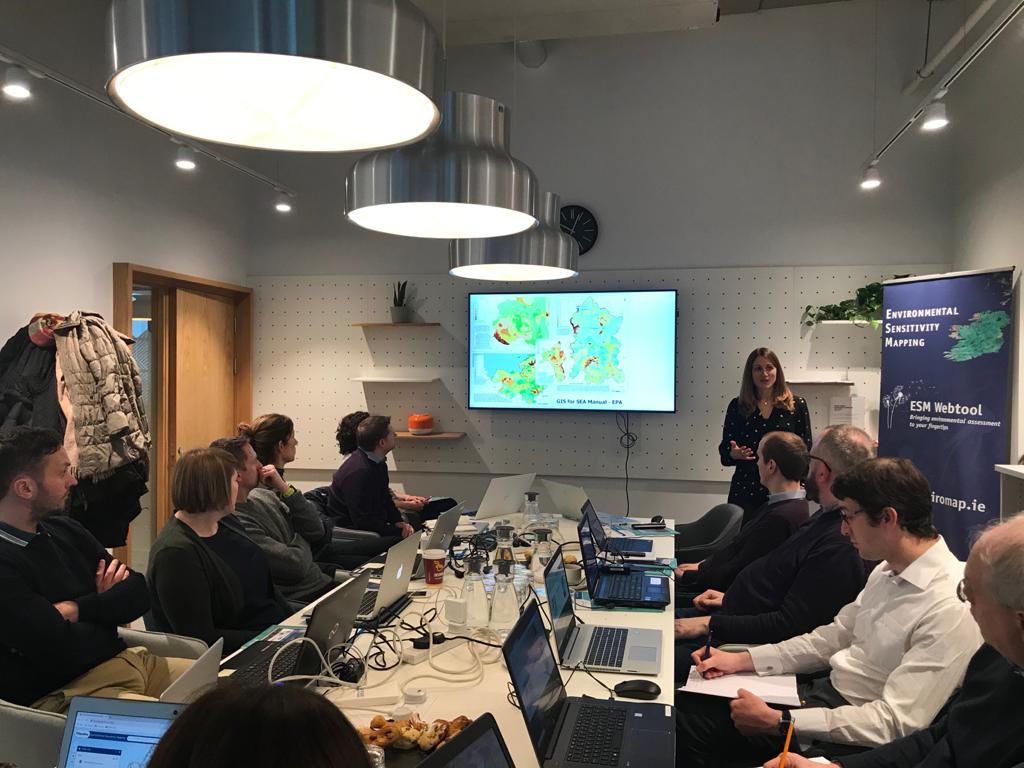
“People are really engaging with science and research and bringing the tools and the knowledge that goes with that to their processes, which is a huge step.”
– Dr Ainhoa Gonzalez
In terms of research, in the Basque country where I’m from, there is much more engagement, lots of workshops and campaigns, which I haven’t seen here until recently. But it’s starting to happen. The EPA for example is very proactive about stakeholder consultation workshops. The Office of the Planning Regulator (OPR), which is only a couple of years old, have a Planning Knowledge Group that engages researchers form third level institutions. There’re a number of UCD researchers on that group. There are also research initiatives and outputs that are being adopted and promoted by government. For example, the Environmental Sensitivity Mapping, is sitting now on the Ordnance Survey’s Geohive data portal, with backing from the OPR and the EPA, and being promoted as a tool to support planning decisions in Ireland. People are really engaging with science and research and bringing the tools and the knowledge that goes with that to their processes, which is a huge step.
Q: How does that kind of change happen?
A: I think a lot of it is down to champions. In the EPA you have Tadhg O’Mahony and in the OPR you have Niall Cussen, key champions of the environment and of environmental integration into decision-making. They also see the value of research. Maybe this is wishful thinking, but I think now we all have a shared goal in sustainability, from so many angles, that government is also seeing the value of research in advancing that goal. By liaising with research they can benefit from it, from knowledge to test trials to piloting, to doing things differently. I have noticed a slight shift in approaches and people are becoming more environmentally aware and more sustainability driven. Those people are the ones who are implementing changes and communicating with science more closely. I think it’s slow going, but I’ve noticed changes. And most of it is thanks to champions, to people bringing about change towards sustainability. And we all can play a part on it. We can all be champions. That’s my humble take.
Q: What is the quality of environmental data in Ireland?
A: Data are essential for evidence, to make informed decisions. We need information to understand and make the right choices. And everything now is going spatial. So it’s not just data that we need, we also need to know location, what are the coordinates associated with the data, so you can map the information, look at their spatial distributions, cause-and-effect relationships, etc. This is central to informed decision making and planning. In terms of Ireland, I started working with spatial or geographic data during my first consultancy job, in 2000, and there was nothing at the time. Natural Heritage Areas, Special Areas of Conservation and Special Protected Areas were mapped, so broadly speaking, ecological designations were all you could find publicly available in GIS format twenty years ago. But things have significantly changed since.
A lot of the local authorities started to map things – moving away from Excel spreadsheets – in the 1990s. So the shift to geographic information it’s recent enough, but we’ve come a long way. Yet, we don’t have sufficient data on certain areas. I work with spatial data in the context of impact assessment and environmental planning. A lot of the datasets are either produced at national level, so they’re coarse in scale and lack local detail. Some data are locally collected, but in such cases, we don’t have national coverage. We are currently at that point of resolution versus coverage. There are also important data gaps. For example, there’s no national landscape character assessment. Going back to the wind energy development issue, without this you’ll never be able to plan for windfarms properly. There is no national habitat mapping either. The EPA is working on this using satellite imagery, but they don’t have a national picture yet – it’s slow rolling out.
Other information and spatial features are collected by local authorities, like waste dumping sites, brownfield sites or protected structures. They have these inventories locally but nobody, no agency, has made the effort to compile all the local authority data to have a national dataset. We could have much better information to make better decisions if we compiled that information and filled the existing data gaps. It’s been a constant fight over the past decade in various projects we’ve been working on. Filling existing data gaps has been a constant research recommendation, supported by a number of governmental agencies, but nothing has been done yet in certain areas.
With local data, you get that finer, more granular resolution necessary to inform local decisions. But this is generally lacking, and local data are only captured when needed and not curated properly or shared. This is one of the things we’re trying to tackle with the Community SDG Dashboard project. We’re trying to see how we can use national data to look at local issues, how we can gather and effectively share local data; and how we can bring it together so it is useful for national reporting, to start filling existing data gaps at national level. It’s still a big struggle. We are looking at what exists locally, but a lot of it is national coarse data. When it comes to populating indicators locally, gathering data to have more localised information, we have no people to do so. We are working with a very active community group, and I don’t know if it’s Covid-related but we’re really struggling to engage volunteers in data gathering efforts to better understand local issues and thus better inform local decisions.
Q: Geographic Information Systems and related spatial technologies open up new possibilities around data and understanding the world. Are you optimistic about the potential of technology to deliver sustainability?
A: It’s a big question! The simple answer is that I don’t know. For me personally, it’s complex. I have a conflict in terms of the sustainability debate. I think GIS are essential for giving us insights that we did not have before. You cannot really reveal much from Excel or a document, GIS give us that extra level of interrogation, an insight on patterns and correlations across space that no other tools have given us before. GIS and related devices such as remote sensors can help us achieve a more sustainable future. These are much more ubiquitous now and provide us with both historical and real time data so we can analyse then to obtain a better evidence-base for informed decision.
But I think there are two important shortcomings. Firstly, there is no organisation or agency that’s actually tracking and amalgamating these data and putting it to effective use for all. Most of novel environmental data collection methods from smart devices and sensors are still research based. Having said that, there are certain organisations in Ireland that are starting to tap into this. For example, Dublin City Council has developed a smart dashboard where a number of indicators are reported upon, some of them in real time such as air quality of Dublin bikes. And Dublin bus have sensors installed in their buses, so you know now when the bus is coming – which is a huge step forward on service effectiveness. So things are improving, the efficient running of cities is improving through smart technology. However, I think there is also a downside to all that, which brings me to the second shortcoming: the fact that smart doesn’t mean green. In the sense that a lot of these technologies are also creating a series of by-product impacts that I don’t think we have really grasped the extent of.
“So my strong view is that smart doesn’t mean green or sustainable, despite certain counter-arguments, especially by industry. We have more technology, more data, but are we actually making good sense of what we do with it or just generating other problems?”
For example, data centres consume large amounts of energy, and have significant footprints. We’re struggling in Ireland, and in many other countries, to comply with EU regulations on air quality and GHG emissions, for example, and all of a sudden, we have new data centres in the country further magnifying emission issues and affecting our achievement of our climate mitigation targets. It’s crazy. Similarly, smart devices need a lot of specialised raw material. The amount of mining that is going on for these devices, and the amount of waste – toxic metals and e-waste, being generated is beyond me. How are we going to tackle all this in ten years’ time? So my strong view is that smart doesn’t mean green or sustainable, despite certain counter-arguments, especially by industry. We have more technology, more data, but are we actually making good sense of what we do with it or just generating other problems?
I think we’re very short sighted as a human race. When I start talking about these things I just get really frustrated, because everyone is going yes, we are doing this and that, we are engaging through citizen science, we are capturing better data through sensors, etc. which is very valuable if put to good use, but what will we do with all the e-waste? More governmental efforts, not just research, needs to be put into these considerations. We are also moving to electric cars, but they are still powered by batteries which generate significant issues at disposal, and are charged from a grid that is currently not from renewable sources. I feel that we are moving too fast in certain areas without thinking of the consequences.
Technology could be a means if we are wise enough to use it in a meaningful way. But if we’re doing technology for the sake of technology, it won’t work – we’re not going anywhere by just thinking with a smart device we can be sustainable. Yes, buses come on time and you’re using energy and water more efficiently. But you’re generating other problems that you haven’t thought about. We need more environmentally-driven forward thinking. We need to address and solve current environmental challenges, as a matter of urgency, without generating new ones. Which is complex, difficult and quite a challenge in itself.
